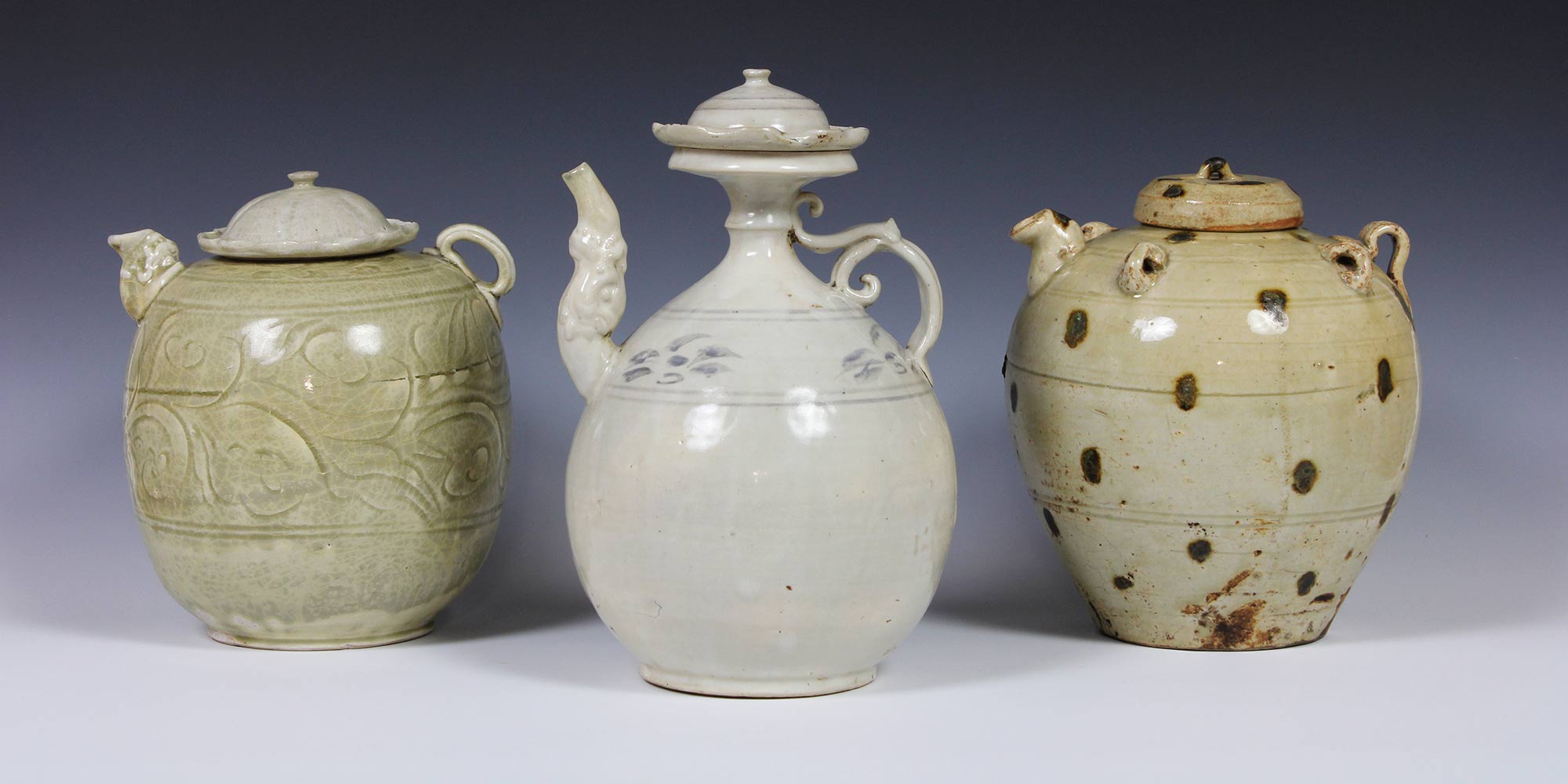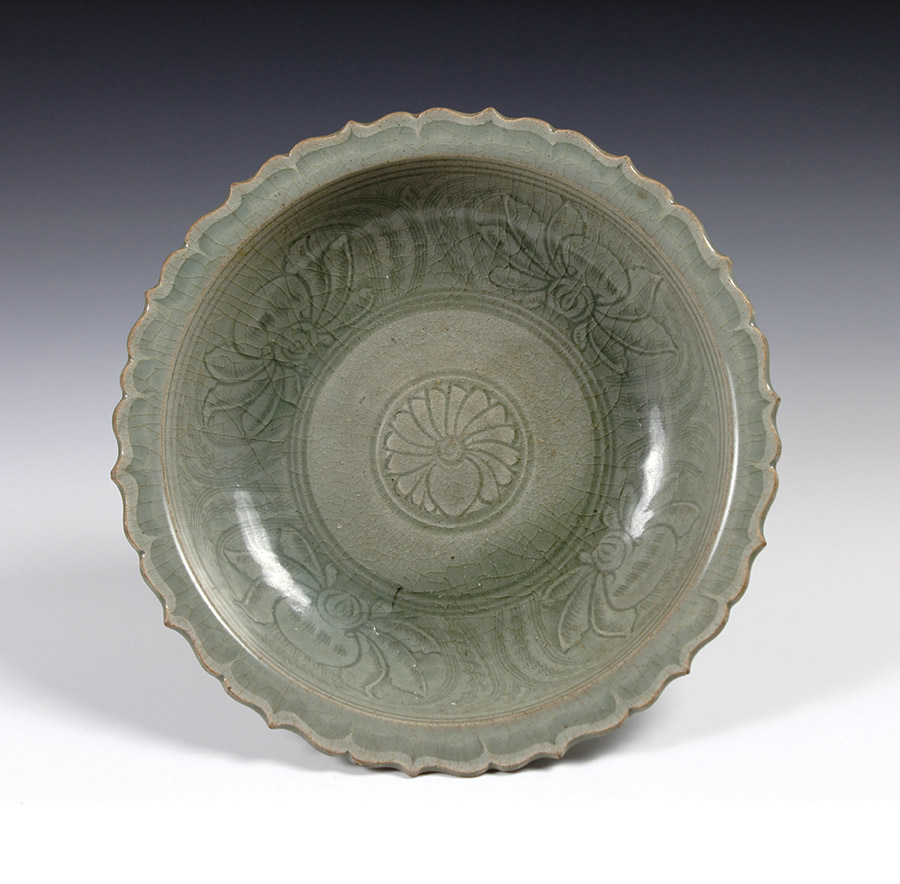
Southeast Asian Ceramics: Selections from the Collection of James E. Breece III
The ceramics of China have been famous for centuries and clearly influenced ceramic production in nearby Southeast Asian countries. This may be the most apparent in Vietnamese ceramics, as parts of the country were closely aligned to China for nearly one thousand years. Although, Vietnamese potters inherently introduced local styles and motifs to their work.
Many other regions brought their own styling and techniques to the ceramic tradition, as well. In what is modern day north and central Thailand, ceramic production flourished between the 14th and 16th centuries, with iron-black under glazed wares and Sawankhalok celadon produced for an export market that was dominated by Chinese blue-and-white wares. While in Burma, a green and white glazed ware was produced during the 16th century, only to be identified in the late 20th century.
These ceramics are under represented in museums around the world and have a greater artistic validity than is largely recognized. Most importantly, to this day these wares reflect the cultural nature of these three countries.
Vietnamese Ceramics

Storage Jar. Stoneware with incised design and cream and brown glaze, H. 33 cm, 12th–14th century, Ly-Tran dynasty (1009–1400) Vietnam. Large storage vessels such as this were the most revolutionary styles at the time. Identifiable by the brown paint applied to the carved design, these vessels featured motifs such as flowers, animals, fish and birds, which were new to Vietnamese ceramics. Scholars point out these innovations as “combining painting with sculpture.” This piece almost certainly once had a lid.
After separating from China in 938, the Vietnamese began making their ceramics with new indigenous styles and production techniques. The Chinese-styled ceramics catering to the colonial ruling class were no longer made and new wares reflecting traditional Vietnamese society and culture were popularized. Buddhist motifs were often reproduced on the ceramic vessels, which mostly included lotus and chrysanthemum, but hibiscus, peony, fish, birds, and animal motifs were also featured. The color brown was also introduced to enhance the white and ivory-white glazed wares. Celadon pottery was also popularized in the Ly-Tran dynasty (1009–1400), reflecting Vietnamese Buddhist art. These ceramics are recognized as they ranged from a very light green to leaf green to a brownish or yellowish green. The ceramics produced during this period are nearly identical to similar Song wares, thanks to diplomatic relations between the two.
Thai Ceramics

Large Bowl. Stoneware with incised decoration and celadon glaze, D. 32 cm. 15th century, Si Satchanalai, Ko Noi kiln, Thailand. This is a fine example and classic product of the Si Satchanalai kilns.
The old Siamese capitals of Sukhothai and Si Satchanalai were famous for their pottery production. These kilns flourished between the 14th and 16th century and have only been excavated in the late 20th century. In Si Satchanalai, the pottery excavated is primarily grayish-white stoneware with a gray-green colored celadon glaze. Decoration was typically achieved by carving the ware, and consisted of floral designs, such as chrysanthemums. The most common forms of ceramic excavated at these kilns are bowls, dishes, boxes, ewers, kendis, bottles, and jarlets.
Another common type of ware found is one that consists of an iron-black painted underglaze and animal motifs. This type of pottery resembles the form and technology of Vietnamese ceramics from the Tran, Le, and Mac dynasties and Chinese ceramics from the Yuan and Ming dynasties.
Though they were significantly less popular than the Chinese blue-and-white ceramics of the Ming dynasty, these wares reached a height of export throughout Asia during this period.
Exhibition from January 2019 through summer 2019.
This exhibition is in conjunction with the exhibition "Passion for Form: Selections of Southeast Asian Art from the MacLean Collection." A two-part catalog was produced for these two exhibitions.